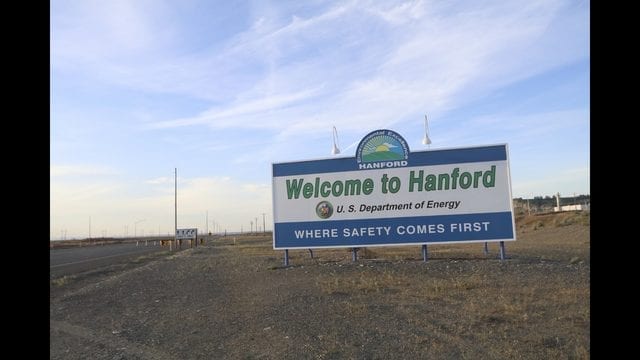Tunnel Collapse At Nuclear Site Reinforces Cleanup Efforts
The collapse of a tunnel located at the Hanford, Washington, nuclear weapons complex which contained radioactive waste brought to the forefront the issue of Cold War toxins being stored in insecure locations and a desperate need for cleanup. There are also dozens of underground storage tanks near the Hanford Nuclear Reservation that are leaking. “Unfortunately, the crisis at Hanford is far from an isolated incident,” said Kevin Kamps of Beyond Nuclear, an anti-nuclear group and the leaks are dangerous.

The government is also trying to clean up groundwater contamination at the Savannah River Site in South Carolina along with 40 million gallons of radioactive waste, as well. Waste at this site was stored in tanks well past their expected lifespan. The effort will likely be going on for years to come. In addition, the United States’ only underground nuclear waste repository, located in New Mexico, stopped receiving new shipments in 2014 after a drum improperly filled with waste burst. The site only recently opened to new shipments.
The problem is that the U.S. government needed to build nuclear weapons during the Cold War very quickly with little thought given to how to permanently dispose of the product. Safely removing it is now proving enormously expensive — The U.S. Department of Energy spends about $6 billion each year on managing the waste left. It is also a slow-going process and so complex that much of the technology required simply does not exist at this time. “The temporary solutions DOE has used for decades to contain radioactive waste at Hanford have limited lifespans,” said Senator Ron Wyden of Oregon. “The longer it takes to clean up Hanford, the higher the risk will be to workers, the public and the environment.”

The U.S. Energy Secretary Rick Perry said the United States can no longer put off fixing the problem, stating lives are at stake due to the improper storage. According to Perry, thus far, the government has failed to take action in a timely manner, and has said he is now focusing efforts in remedying the issue.
$2.3 billion of the federal budget for this fiscal year will be designated for cleanup efforts at Hanford, and Washington Governor Jay Inslee said the state plans to issue an order ensuring the government determines the cause of the tunnel’s collapse. Any potential for immediate risk factors to other tunnels will be assessed by the Department of Energy, and if substantial risk is identified, efforts to safely store waste will be pursued. A 2018 proposal is expect to be released by the President next month.
A gravel road was built to site of the Hanford collapse and workers plan to fill the hole with fifty loads of dirt in order to rectify the issue, according to a statement from the Department of Energy. The tunnel was originally sealed back in 1965 with eight loaded cars inside. “This disaster was predicted and shows the federal Energy Department’s utter recklessness in seeking decades of delay for Hanford cleanup,” said Gerry Pollet, a Washington state legislator.
Sources:
Tunnel Collapse Renews Safety Concerns About Nuclear Sites
Tunnel cave-in sparks emergency alert at Hanford; no radiation leaks detected


Join the conversation!